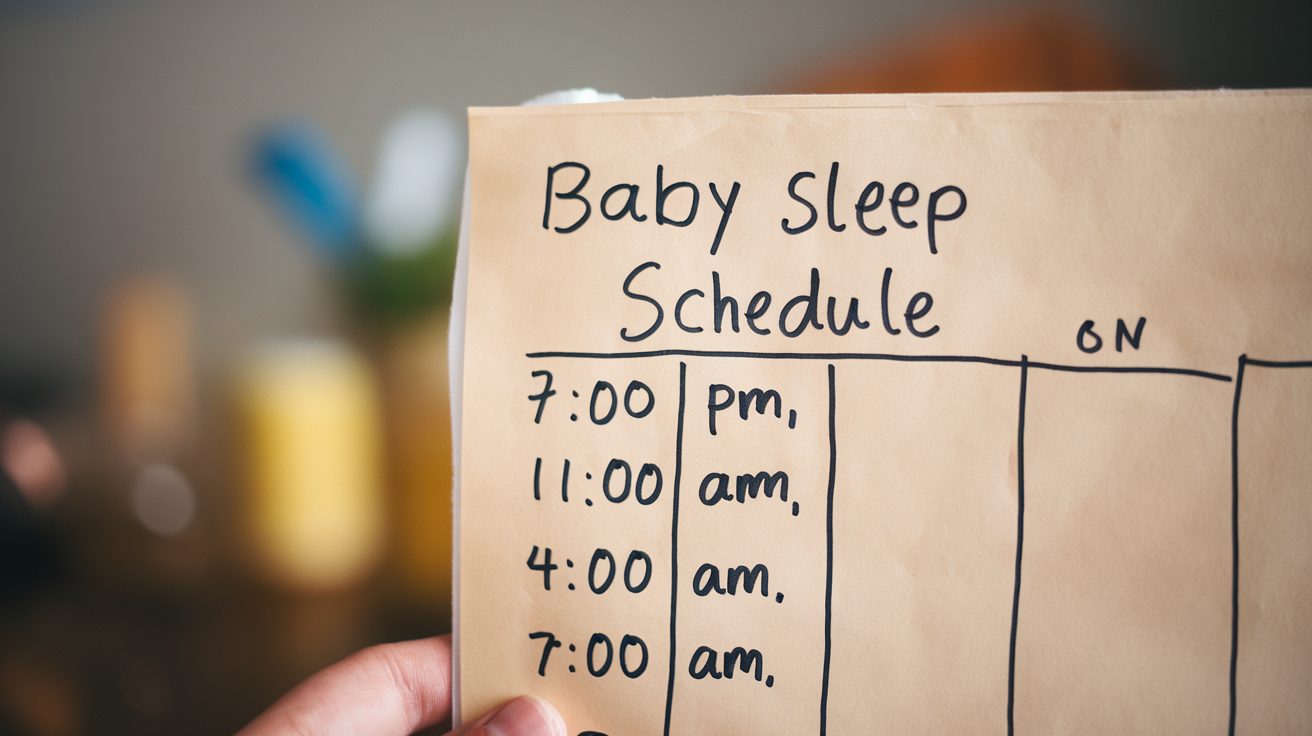As a parent, it can be both frustrating and exhausting when your 3-month-old is not napping well. Trust me, I’ve been there.
When your little one is struggling to sleep during the day, it can feel like you’ve tried everything, and yet, nothing seems to work.
But don’t worry — you’re definitely not alone. Many parents face this same challenge, and there are several factors that can contribute to nap difficulties at this stage.
Common culprits include sleep regression, developmental milestones, and changes in your baby’s natural sleep cycles.
Understanding these underlying reasons will help you approach your baby’s sleep in a more informed way, tailored specifically to their needs.
5 Reasons Why Your Baby is Not Napping Well
As per my experiences in dealing with this, in this post, I’ll walk you through the five most common reasons your 3-month-old might not be napping well — and, more importantly, how you can address them effectively.
1. Sleep Regression at 3 Months
Around 3 months, many babies go through what’s called a sleep regression. This is when your baby’s sleep patterns suddenly change, and naps become harder to achieve.
While it may seem like your baby’s sleep is getting worse, it’s actually a normal part of their development.
Effects on Napping
- Shorter naps (often around 30 minutes or less)
- Increased night wakings
- Difficulty settling down for naps
- Frequent awakenings during naps
What You Can Do
- Create a Calming Nap Routine: Set the stage for a restful nap by introducing a simple, calming routine. Start by dimming the lights and playing soft, soothing music to signal that it’s time to wind down.
-
Maintain a Sleep-Friendly Environment: Make sure your baby’s nap environment is as peaceful as possible. Keep the room dark using blackout curtains, reduce noise with a white noise machine, and ensure the room temperature is comfortable — not too hot, not too cold.
-
Stay Patient and Consistent: It can feel tough, but remember: Sleep regression is just a phase. Keep your routine consistent, even if naps are shorter or more disrupted than usual.
2. Changes in Sleep Architecture
At 3 months, your baby’s sleep cycles start to change. Newborns sleep in a more constant pattern, but around this time, babies start to develop adult-like sleep cycles.
This means they move between light sleep and deep sleep, and they may wake up in between cycles.
Your baby may wake up after a short nap, especially if they haven’t learned to settle themselves back to sleep.
What You Can Do
- Encourage independent sleep: Try putting your baby down drowsy but awake. It might feel tough at first, but this small change helps them learn to fall asleep on their own, making naps easier in the long run.
- Establish consistent nap times: Set a regular nap schedule, even if it’s just roughly the same time each day. Consistency makes your baby feel secure and helps them nap for longer stretches, giving both of you a bit more peace.
3. Developmental Milestones
As babies grow, they reach new cognitive and physical milestones that can affect their sleep.
Around 3 months, babies start becoming more aware of their surroundings and begin developing new skills, such as rolling over or grasping objects.
Effects on Napping
- Increased alertness can disrupt nap time.
- New skills like rolling over can overstimulate.
- Cognitive growth can cause restlessness.
- Physical milestones may lead to discomfort.
- Longer awake time can affect nap consistency.
What You Can Do
- Create a calming pre-nap routine: Keep things simple: dim the lights, play soft music, or gently rock your baby to signal that it’s time for sleep.
- Limit Stimulation Before Nap Time: Avoid overstimulating activities like using Mobile phones or watching Television close to nap time. Keep the environment calm and quiet to help your baby wind down.
4. Inconsistent Sleep Schedules
At 3 months, babies don’t always have a regular nap schedule. This can make it difficult for parents to plan their day and establish a routine.
Effects on Napping
- Irregular nap times can disrupt your baby’s routine.
- Naps may vary in length and timing.
- Inconsistent schedules can make it harder for your baby to settle.
- Lack of consistency can lead to overtiredness.
- Adjusting to a regular sleep pattern becomes challenging.
What You Can Do
-
Establish a Consistent Nap Schedule: Try to set a regular nap time each day to help your baby get used to a routine.
-
Pay Attention to Wake Windows: Ensure your baby stays awake for the right amount of time (1-2 hours) between naps to avoid overtiredness.
-
Adjust Schedule Gradually: If needed, slowly shift nap times by 15-30 minutes to work toward a more consistent schedule.
-
Be Flexible, but Stay Consistent: While flexibility is important, try to keep the timing of naps as consistent as possible each day.
5. Over-tiredness or Under-tiredness
Finding the right balance of awake time and nap time can be tricky. If your baby is either over-tired or under-tired, it can affect their ability to nap properly.
Effects on Napping
- Over-tired babies: If your baby has been awake too long, they may resist naps and have trouble settling down.
- Under-tired babies: If your baby hasn’t been awake long enough, they might struggle to fall asleep or take short naps.
What You Can Do
-
Adjust Wake Windows: Ensure your baby stays awake for 1-2 hours between naps. Too much awake time can cause over-tiredness, while too little can lead to under-tiredness.
-
Watch for Sleep Cues: Pay attention to signs of tiredness like yawning or eye rubbing, and start winding down before they get too tired or too energetic.
-
Offer Extra Naps If Needed: If your baby seems overly tired, add an additional nap or shorten wake time between naps to prevent them from becoming overtired.
-
Gradually Extend Wake Time: If your baby is under-tired, gently increase their wake window by 15-20 minutes to help them build up enough sleep pressure for a longer nap.
-
Be Flexible with Nap Length: Adapt the nap duration to your baby’s needs. If they’re too tired, let them nap a bit longer to catch up on rest.
Conclusion
I know how hard it can be when your baby won’t nap.
After looking at these five reasons, you might feel worried or unsure. But here’s what I want you to remember: you know your baby best.
Start with small changes. Watch how your little one responds. Maybe they need a slightly darker room, or perhaps that 2 PM nap needs to shift to 1:30 PM.
Trust what your heart tells you. Every baby is different, and you’ll find what works for yours.
Want to learn more about baby sleep? Leave a comment below about your biggest naptime challenge.
I read and reply to every comment, and together, we can help your little one get the rest they need.
Frequently Asked Questions
What Is the 3 C’s Baby?
The 3 C’s refer to Crying, Clinginess, and Change in sleep patterns, which are common during baby growth spurts or developmental phases.
What Is the 40 Day Rule Baby?
The 40-day rule refers to a traditional practice where new mothers stay at home with their baby for the first 40 days, allowing time for recovery and bonding.
Which Baby Leap Is the Hardest?
Leap 4, around 19-24 weeks, is often considered the hardest as babies experience major developmental changes that affect their sleep and behavior.
When Are Wonder Weeks?
Wonder Weeks occur around specific developmental stages, usually at 5, 8, 12, 19, 26, 37, 46, and 55 weeks, during which babies experience significant growth and behavioral changes.














